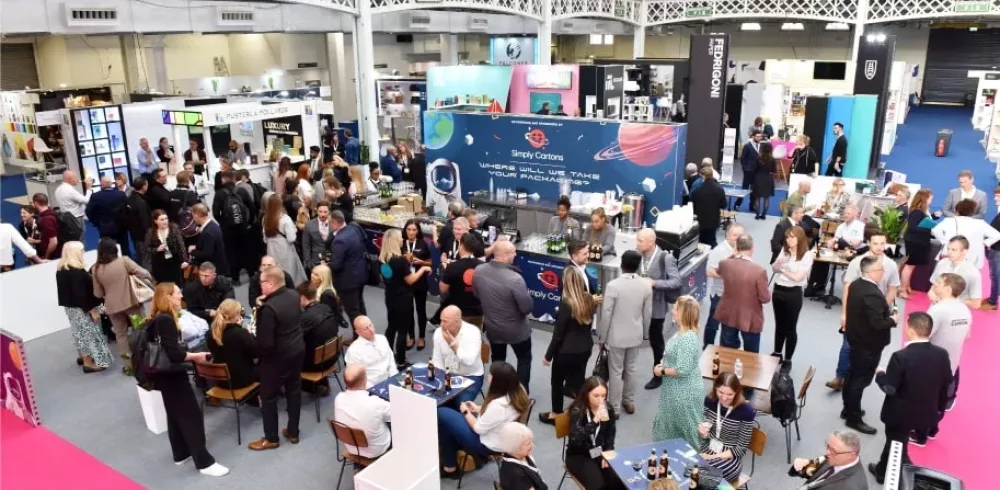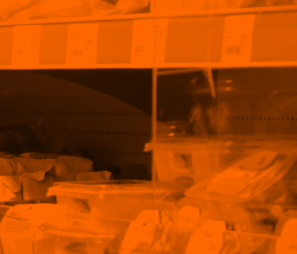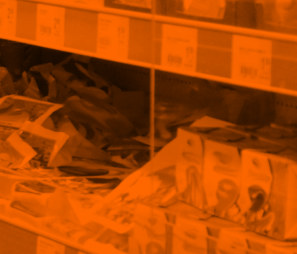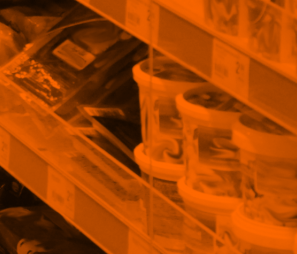In an exclusive interview with Steve Lister, a respected sustainability consultant and leading influencer for global brands and retailers, Easyfairs has gained valuable insights into the significance of packaging design in achieving sustainability goals. Lister shared his experience shedding light on the various considerations of designing for sustainability. He highlighted many challenges businesses face in today’s sustainability-minded market, including the need for collaborative efforts.
When it comes to packaging, both environmentally conscious consumers and retailers closely examine the product’s life cycle. In an industry brimming with innovation, a wealth of packaging alternatives and sustainability experts are available to guide brands from the very start. Setting the stage for the conversation, Lister emphasised that packaging design fundamentally influences the product’s life cycle, making it imperative to get the design right from the outset.
He told londonpackagingweek.com: “The Ellen MacArthur Foundation shared a statistic that says 80% of a product’s environmental impact is influenced by decisions made at the design stage. So, when you look at that, if you get it wrong in the beginning, it’ll never recover. I look at the whole life cycle from the design stage, which is really important, through to the materials – you need to specify the right materials. Whether for luxury or convenience, the materials need to be functional. You also need to consider supply chain partners – are they sustainable and how do they operate? We then flow through to manufacturing and production, followed by logistics – how does it get into the customers’ hands? Then, of course, end-of-life – perhaps reusable, recyclable, or biobased? If you get that wrong initially, it has a real impact.”
Global brands carry a significant responsibility when designing for packaging sustainability due to their widespread influence and environmental impact. As key players in the market, they possess the resources, reach, and ability to drive change at a large scale. Regarding capabilities to design for the product life cycle, Lister added, “Some big companies like Unilever and P&G have shown a good understanding of sustainability and have committed to global sustainability strategies.” He applauded these companies for setting clear visions and making high-level decisions that shape the direction of their businesses. For instance, “Unilever’s sustainable living plan and The Body Shop’s focus on ingredients and packaging exemplify their commitment to sustainability.”
However, Lister pointed out that not all businesses are adequately equipped to navigate the complexities of sustainability. “A knowledge gap has opened up,” he added. “Especially as sustainability has become more complex. There is a lot of talent coming through, but a lack of experience. Today, sustainability encompasses not just corporate social responsibility (CSR) but also environmental, social, and governance (ESG) aspects – that covers everything! Sustainability has evolved, which is where many companies are getting caught out.”
While global brands are seen as leaders in sustainability, SMEs and start-up brands have a pivotal role to play too. Often more agile at implementing change in response to consumer demands for sustainability, SMEs and start-ups can drive innovation through ambitious sustainability initiatives. Lister acknowledged the demanding nature of sustainable packaging and the tremendous pressure the packaging industry faces, saying, “Sustainable packaging is a journey, not a destination. The targets we have now will not be the same as we will have in the future. Packaging companies have a really difficult job. It’s not as simple as just making recyclable packaging.”
He stressed the need to find “a delicate balance between using sustainable materials, creating visually appealing packaging, and ensuring recyclability, reusability, or overall sustainability.” While the packaging industry plays a vital role in delivering products, especially in sectors like food, where freshness and protection are paramount, it also faces challenges related to perceived overpackaging and hard-to-recycle multi-layer materials. Lister claims that “sustainability in packaging design is an ongoing work in progress, requiring continuous innovation and adaptation.”
Consumer behaviour is an increasingly critical factor when considering sustainability goals. Lister underlined the complexity of consumer decision-making, stating, “We have one second for consumers to make their purchasing decisions. While some individuals are willing to pay more and prioritise sustainability, many consumers default to old habits or prioritise price when standing in front of store shelves.” Financial constraints and limited time for making purchasing decisions can contribute to this behaviour. However, Lister noted that “younger generations, like Gen Z, exhibit a stronger inclination toward sustainability and are more likely to invest in sustainable brands that match with their sustainability values. They have been brought up with it.”
As the sustainable packaging agenda continues to develop, it is becoming increasingly apparent that there is no panacea for sustainability but rather a growing need for organisations and businesses around the globe to ‘do their bit’ and work together. Flagging the crucial role of collaboration in driving progress in sustainability, Lister said, “Bringing in an independent sustainability consultant can help swerve internal politics, break down silos and introduce new thinking, designs, and materials. They can challenge existing decisions and bring fresh perspectives without internal biases.”
He added: “What I always say to clients is that collaboration is key because people can’t do it on their own; it’s too complex.”
While some businesses may pursue individual sustainability initiatives to gain a commercial advantage in the market, Lister firmly believes that greater collaboration would benefit all businesses equally. They can collectively raise the bar and elevate overall sustainability standards. Encouraging collaboration and knowledge-sharing among businesses can foster innovation and generate positive environmental impacts.
Lister added that he reassures his clients that as developments in packaging sustainability evolve, change will be accepted. “Consumers are intelligent enough to understand that if a decision made three years ago, with good intentions, is no longer the most sustainable solution, it is OK for brands to pivot and switch to a new material solution,” he said. “For example, from compostable coffee cups to fully recyclable coffee cups.” He continued, “An external person can give a nudge and push boundaries that an internal person might not be comfortable with. Collaboration is everything.”
Another promising area for making great strides in sustainability in packaging is the Luxury Packaging market. Lister said, “Luxury has a good opportunity because luxury also equals brand loyalty, so you can probably take more risks at this point. Then again, you have another dilemma of what the purpose of the packaging around luxury products is serving; it has to be protective, showcase the product, and consider sustainability. However, I think Luxury brands should 100% accelerate towards sustainability due to loyalty.”
Delving deeper into the luxury sector and using fashion as an example, Lister said, “Let’s land on fashion for a moment, say shoes or trainers or something; you have an opportunity there. There is a huge trend for unboxing, as Apple has been doing for years. Now you see brands not wrapping shoes or trainers in plastics but putting them in velvet bags that protect the product and have the branding on them. You can bring high-quality materials to create beautiful packaging and excitement around a new product. It’s a huge opportunity. It’s in the will of all these brands to come up with something creative, beautiful and sustainable.”
Lister added, “Packaging can also be iconic, like Apple, Grey Goose Vodka, and many other innovative companies. Many companies are switching materials from plastic to sustainable options. We can’t make everything out of brown paper and string, that won’t wash with the luxury brands – but they have the luxury of future-proofing their packaging and making it both sustainable and iconic.”
London’s vibrant home for packaging innovation and design will walk you through that immersive process, where the right materials and shapes are matched to the desired sensory cues that trigger a positive response in the consumer’s mind. From material research to manufacturing and finishing processes, the two-day, four-sector showpiece events are designed to help luxury brand owners leverage the potential that materials have to fine-tune the perceived value of the packaging design and, therefore, the brand.
Lister’s expert insights highlight the importance of understanding the entire life cycle of products, making informed decisions, and prioritising sustainability. The evolving sustainability landscape and consumer behaviour trends illustrate the need for continuous innovation and collective efforts to meet the rising demand for environmentally responsible packaging. By embracing collaboration and sharing resources, businesses can collectively raise the bar for sustainability, ultimately shaping a more sustainable future. Luxury brands, notably, have a huge opportunity to make a big difference in their sustainability agenda and brand reputation.
If you haven’t yet registered for London Packaging Week 2023, please do so here or to find your perfect stand package, click here
Manufacturing & Engineering Magazine | The Home of Manufacturing Industry News















